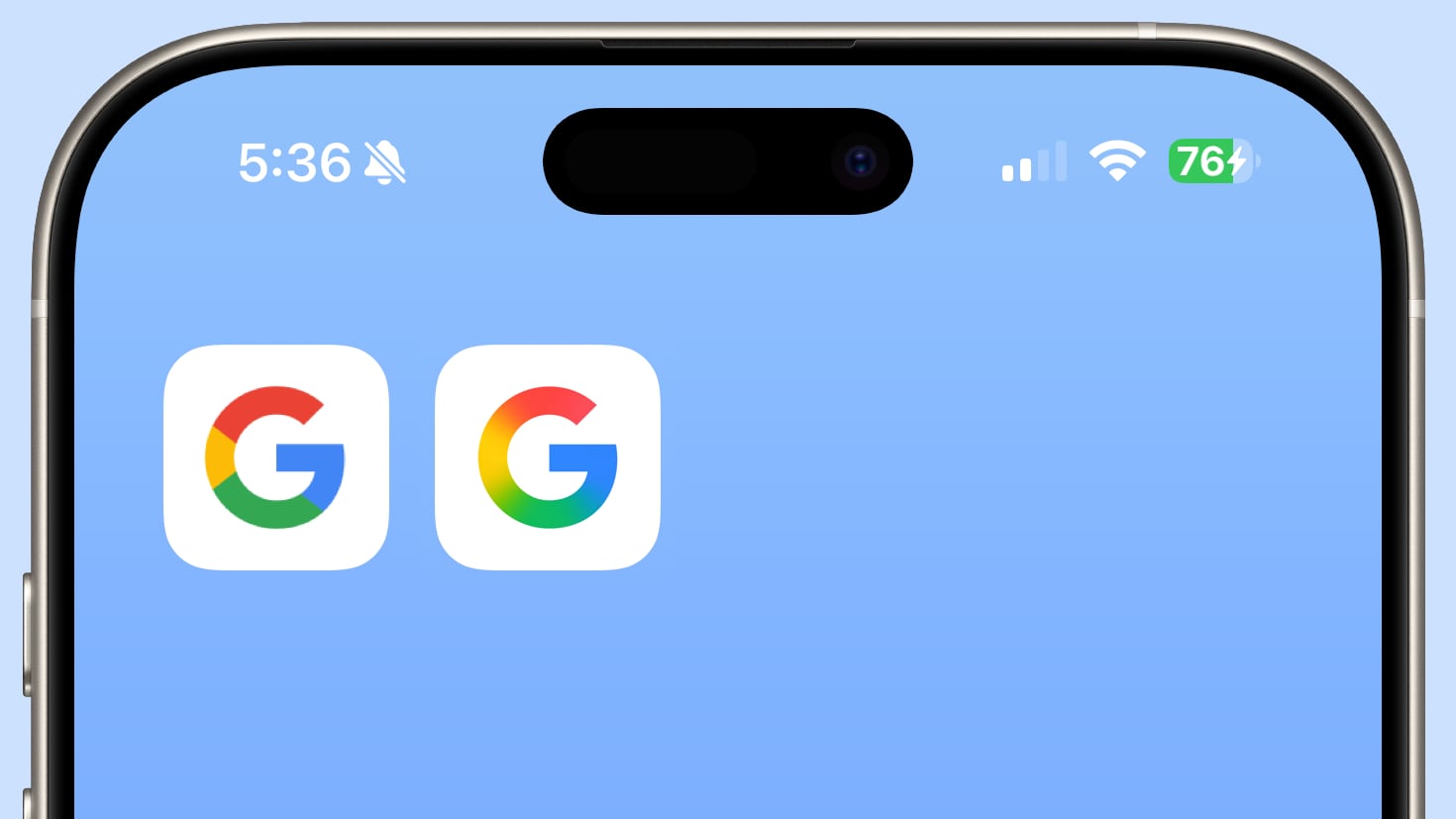Google's New Logo Update in 2025: A Fresh Look for a Tech Giant
Introduction
On May 12, 2025, Google quietly released its first major logo update since the past decade. That refresh, which replaces the blocky four-color design with a smooth, gradient transition, announced recently started rolling out to platforms including the Google Search app for iOS and Android. The update is part of Google’s continuing attempts to update its brand, while remaining true to its vivid past. In this post, we’ll cover the specifics of the new logo, what it means, what people are saying, and how it nestles into Google’s ongoing branding history.
Details of the Logo Update
Design Changes
The major point of the new 'G' logo may be the gradation! In the original logo, the solid circles were red, yellow, green, and blue, and overlapped, although they were not actually four at each side of the G. This fluid transition between them is the premise of the 2025: red to yellow, yellow to green, and green to blue. Instead, it’s much more colorful and animated, replacing the flat, polygonal design of the logo introduced in 2015 (9to5Google).
For now it seems that the primary six-letter “Google” wordmark, set in the Product Sans typeface introduced in 2015, is the only part that’s staying the same. The only thing that’s new about this refresh is the 'G' icon itself, the one that represents Google’s brand across its apps and services.
Platforms and Rollout
The refreshed logo was first observed in the Google Search app for iOS after an update on May 11, 2025. It even began rolling out to Android devices with the Google app version 16.18 (beta). The slow rollout would appear to indicate Google is doing some user-testing to see how people like the new look before releasing it for all its products and services (TechEBlog). One could speculate that other Google product lines, like Chrome or Maps, could adopt these similar gradient designs in the future, yet there have been no confirmations as of now.
Design Inspiration
The new logo aligns with Google’s current design philosophies, particularly its Gemini AI branding and Material You design style. Material You emphasizes personalization, adaptability, and seamless integration across devices, including support for dark mode. The gradient design also mirrors the visual style used in Google’s AI Mode in Search, suggesting a cohesive approach to branding across Google’s ecosystem (9to5Google).
This update comes at a time when Google is heavily investing in artificial intelligence, with initiatives like Gemini shaping its future. The gradient logo may symbolize this shift towards more fluid, innovative technologies.
Public Reaction
The logo has been well-received by both the public and design community. Creative Bloq said that move is already “going down well” and added that Google’s logo is now a potential top logo. The new gradient look has been commended for giving the old design a dated appearance, with lots of folks loving its sleek, Instagram-like appearance (Creative Bloq).
TechEBlog shared these same opinions, saying the new logo is "livelier and more modern" and fits well with the sort of branding Google is currently looking for. Unlike many controversial logo re-designs though, this one doesn't seem to be getting a lot of haters, probably because it's relatively subtle and is clearly going with the times in terms of design (TechEBlog).
It’s worth noting that there hasn’t been much backlash, since people usually have strong feelings about logo changes. When Google changed its logo to sans-serif in 2015, for instance, some users complained that the sans-serif design was hard to read. However, the 2025 upgrade appears to have found a happy medium between the traditional and cutting-edge radical jumps.
Historical Context
Google’s logo has changed a lot since the company was founded in 1998 – new logo variations are popping up all the time, as new design trends and products emerge. Here is a brief overview of its logo history:
| Year | Logo Description | Key Features |
|---|---|---|
| 1997 | First official logo | Text: Serif font, multi-colored wordmark with exclamation point, designed by Sergey Brin (though not at the top of the search results page). |
| 1999 | Ruth Kedar’s design | (and Catull is a gorgeous forever type), iconic multi-colored wordmark, fun yet professional. |
| 2013 | Flattened logo | No two-dimensional design, ever so slightly altered color palette, less busy/less cluttered appearance. |
| 2015 | Product Sans introduction | Contemporary geometrical sans-serif lettering, filled colour block 'G' icon. |
| 2025 | Gradient 'G' logo | Gradient color mixing looks fresh and now (checks out with Gemini AI and Material You too). |
The 2015 update was particularly significant, as it introduced the Product Sans typeface and the four-color 'G' icon, designed to work across multiple devices and input methods (e.g., tap, type, talk). The 2025 update builds on this foundation, refining the 'G' icon to reflect current design trends while maintaining Google’s recognizable color scheme (Google Logo Evolution).
Significance of the Update
The 2025 logo update is more than a cosmetic change; it signals Google’s strategic direction in several ways:
- Alignment with AI and Innovation: The gradient design ties into Google’s focus on AI, particularly its Gemini platform. By adopting a similar visual style, Google is creating a cohesive brand identity that reflects its technological advancements (India Today).
- Move Away from Flat Design: The shift to a gradient logo may mark the end of the flat design era, which dominated the 2010s. Other tech companies, such as Amazon and Adobe, have also recently tweaked their logos, suggesting a broader industry trend towards more dynamic, gradient-based designs (Creative Bloq).
- Brand Cohesion: The new logo ensures consistency across Google’s growing portfolio of products and services. As Google expands into new areas like AI, cloud computing, and hardware, a unified visual identity is crucial for maintaining brand recognition.
- User-Centric Design: The gradient logo’s adaptability to dark mode and various screen sizes reflects Google’s commitment to user-centric design, a core principle of Material You.
Potential Future Implications
While the current update is limited to the 'G' icon, it raises questions about Google’s broader branding plans. Will other Google products adopt similar gradient designs? Could the main "Google" wordmark see a refresh in the near future? The timing of the update, just days before the Google I/O 2025 developer conference (set to begin May 20), suggests that Google may use the event to announce further branding or design changes (USA Today).
Additionally, the positive reception to this update could encourage other tech companies to experiment with gradient designs, potentially influencing logo trends across the industry. As design preferences continue to evolve, Google’s move may set a precedent for balancing innovation with brand familiarity.
Conclusion
Google’s 2025 logo update is a small but meaningful step in its branding journey. By introducing a gradient design to its iconic 'G' logo, Google has modernized its visual identity while staying true to its colorful roots. The positive public reaction, coupled with the logo’s alignment with Google’s AI and design strategies, underscores the success of this refresh. As the logo rolls out across more platforms, it will be fascinating to see how it shapes Google’s brand perception and influences design trends in the tech industry.
Whether you’re a design enthusiast or a casual Google user, the new 'G' logo is a reminder of how even subtle changes can have a big impact. Keep an eye out for it the next time you open the Google Search app—it’s a small piece of Google’s future, right on your screen.

